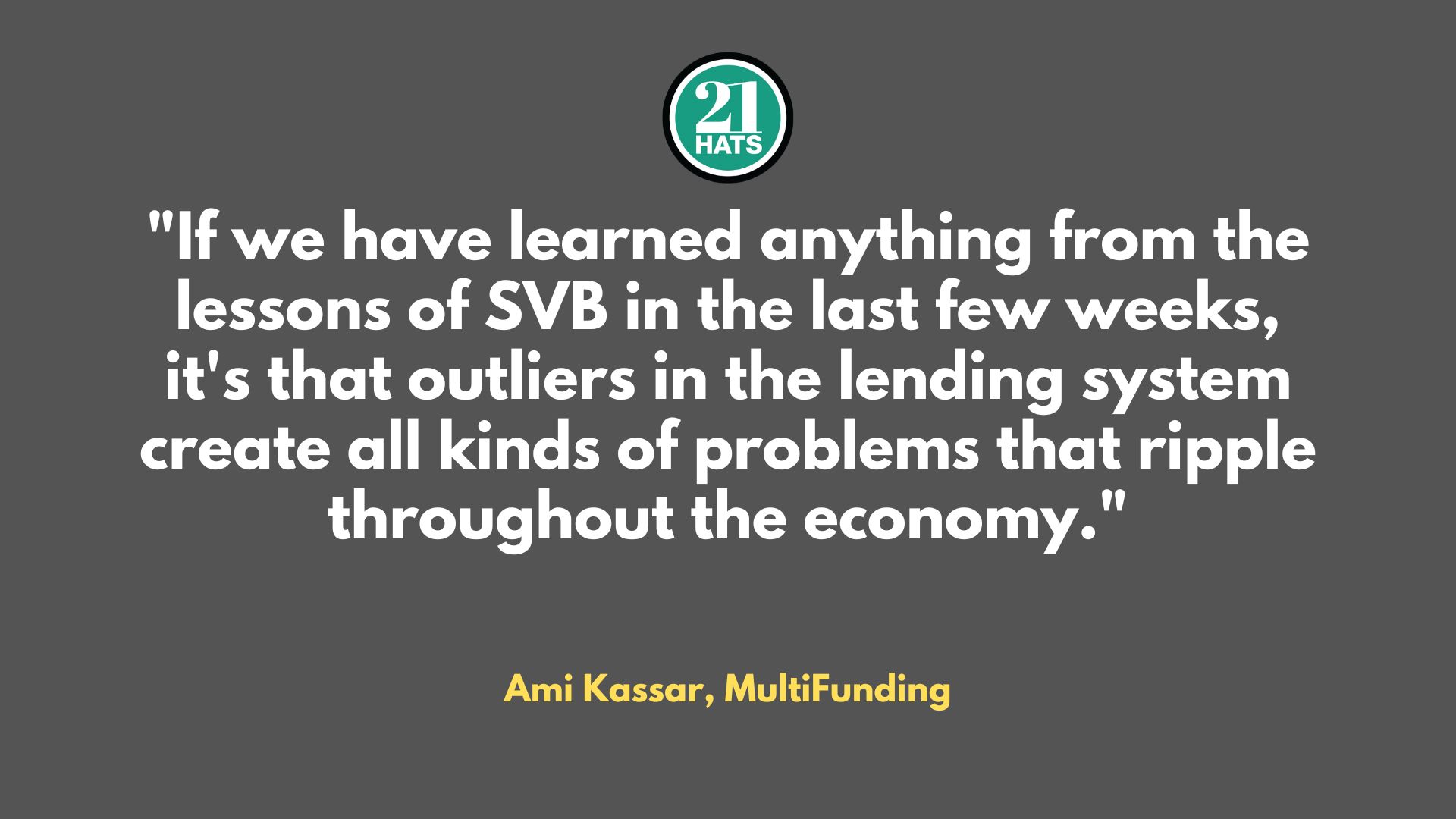Is the SBA Headed Down The Same Path as SVB?

Broadening access to capital is a worthy goal. But it seems as if the current SBA administration is ignoring what can go wrong if you inject capital into businesses that aren’t ready for it.
By Ami Kassar
The Small Business Administration’s new rules and program changes should be concerning to everybody.
The business of lending money and borrowing money may feel antiquated. And if you are in the middle of a loan application and the million rules that go along with it, sometimes you want to pull your hair out. At MultiFunding, we live this reality with our clients every single day.
While the lending system can be maddening, it is based on some profound logic. The fact is that it does take work to get an SBA loan, but this actually protects borrowers as well as lenders. You need to have your financial house in order to get a good loan. With the proper controls around the process, borrowers significantly increase the likelihood that they will be able to pay it back.
Lending decisions should be made based on the company’s ability to repay the money. If you give out too much money too early to companies, they are likely to waste it, and the problems will accelerate as they have to start paying it back. That’s part of what went wrong at Silicon Valley Bank.
Of course, all the rules and regulations protect the lenders as well. It’s pretty simple – lenders need to be paid back to keep their institutions safe and to be able to keep cycling money through the economy, helping businesses grow and expand. Safe banks are well diversified and carefully manage against taking on too much risk. Those who complain about how hard it is to get a loan sometimes forget that banks are businesses, too.
None of this is terribly complicated. And yet, it’s unclear whether these basic tenets of lending are part of the current SBA administration’s DNA. Instead, it seems as if their mission is focused on broadening access to capital while leaving the potential fallout to future generations of taxpayers to figure out.
My frustration with the current SBA administration started with the Economic Injury Disaster Loan program. The administrators increased the loan limits from $500,000 to $2 million near the end of the pandemic without requiring businesses to offer proof of economic injury. The EIDL is a long-standing, successful program designed to help businesses imperiled by a hurricane, a tornado, or another disaster. With Covid, the SBA saturated balance sheets with long-term, low-interest capital. The program issued 3.9 million loans for a total of $378 billion.
Now, as EIDL loans start to come due, many business owners need help figuring out how to meet their payment obligations. A recent Business Journal Article reported that the SBA is struggling to work through back-end collections on these loans, and many owners are losing sleep worrying that the government will come for their houses. A Washington Post article reported that the government is considering giving up on collecting EIDL loans of less than $100,000 because they don’t have the infrastructure to handle it.
These issues are the kinds of dominoes that fall when you put too much money into the hands of businesses too quickly and without the proper controls in place. And yet, with all of this on the table, the SBA administration is moving forward with plans that suggest it has not learned its lesson. It recently announced sweeping changes to loosen long-standing rules in its lending programs and to open the programs to additional non-regulated fintech lenders.
These changes are intended to increase access to capital for minority and underserved communities. As I have written before, there are often better ways to help entrepreneurs than making it easier for them to access capital. Sometimes, entrepreneurs need mentoring and scaffolding before they try to raise money. In the long run, everyone’s better off if entrepreneurs first prove their concept and don’t get the capital until they’re ready to grow and expand.
If we have learned anything from the lessons of SVB in the last few weeks, it’s that outliers in the lending system create all kinds of problems that ripple throughout the economy. SVB was not a well-run bank with a sound credit culture. Their lending standards were loose, they didn’t worry about the risk on their balance sheet, and I still don’t know how the regulators let them get away with it. They thought their model was invincible until one day it wasn’t.
Sadly, unless someone reins in this SBA administration, I worry that in a few years, commentators will be talking about the SBA and SVB in the same sentence. This would be a horrible outcome for the SBA, a program that has served the interests of small businesses so well for decades without costing the taxpayers money.
Ami Kassar is CEO of MultiFunding.